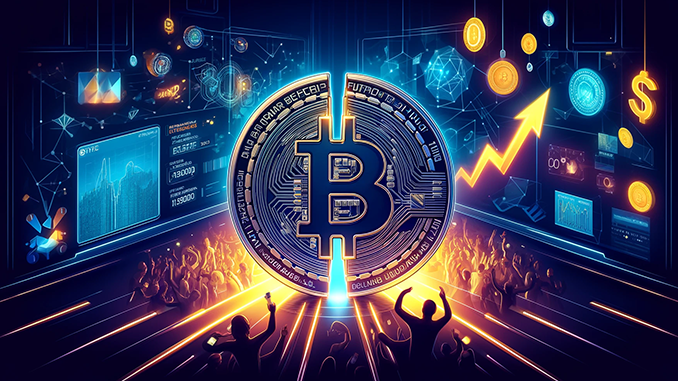
The Bitcoin Halving 2024 took place early Saturday morning. The new Runes protocol was launched at the same time. First consequence: Bitcoin transaction fees skyrocketed.
As block 840,000 in the Bitcoin blockchain drew ever closer on Saturday night, members of the crypto scene around the world arranged parties. The reason: this very block activated the Bitcoin Halving 2024, an event that only takes place every four years. On the one hand, the great interest was focused on whether the halving could influence the price curve of Bitcoin. On the other hand, it was clear that the new Runes protocol would also come into force with Block 840,000, a development with potentially far-reaching consequences.
Looking back on the Bitcoin Halving 2024, we can now conclude that The markets remained cool, with the BTC price curve fluctuating only slightly directly around the event. However, block 840,000 poured a record sum of around 2.6 million US dollars into the ViaBTC miner pool’s coffers. Via BTC had mined this block and because there is something magical about the Bitcoin Halving Block, high transaction costs were offered to accommodate a transaction in this block. Subsequent blocks also achieved record-breaking levels with transaction fees of over 1 million US dollars. This development is not necessarily pleasant for Bitcoin users. Before the halving, you normally had to budget up to 100 sats (the smallest Bitcoin sub-unit) in fees for a transaction, which corresponds to just under 10 US dollars at current exchange rates. At and immediately after the Bitcoin Halving, the fees exploded to over 1,500 sats, or around 150 US dollars.
Bitcoin transaction fees could become a permanent issue
Transaction fees can be observed at Mempool.space, for example, and can also be seen there: Less than 12 hours after the halving, Bitcoin transaction fees leveled off again at just over 100 sats. But the topic remains exciting, because the new Runes protocol also plays a role. The Runes protocol makes it easier than ever to create NFTs and meme coins in the Bitcoin blockchain. However, this requires additional transactions, which have the potential to regularly drive up fees. Real-time data on runes is available on runealpha.xyz and it shows: Thousands of Runes are still waiting to be created and more than 80,000 collectors and speculators already have Bitcoin Runes in their wallets.
Conclusion: Bitcoin miners benefit from halving first
Bitcoin NFTs were already a trend before the halving, providing miners with additional income. Bitcoin mining is actually no reason for miners to be happy, as the guaranteed bonus per new block was halved from 6.25 to 3.125 BTC (equivalent to around 200,000 US dollars). However, a situation is now increasingly arising in which the transaction costs that miners have to pay on top of the bonus are earning more money than the block bonus itself. It is therefore more important than ever for investors to check the development of Bitcoin transaction costs. After all, if you want to send small amounts of BTC, for example to a crypto exchange, you don’t want to pay astronomical transaction fees. It remains to be seen whether and how the Bitcoin system will correct itself or whether a religious battle will flare up over runes and ordinals. Bitcoin NFTs had already led to fierce disputes in the community at the end of 2023.
Meanwhile, eyes are now turning back to the price development of Bitcoin. And lo and behold: predictions that a collapse was imminent after the halving have not materialized, at least in the short term. At the halving, Bitcoin was trading around USD 64,000 and 60 hours later this Monday morning, BTC is hovering around USD 66,000.

Leave a Reply